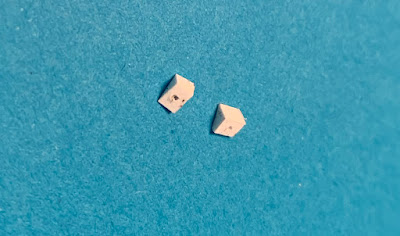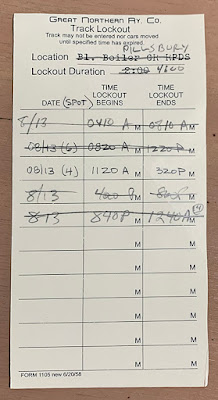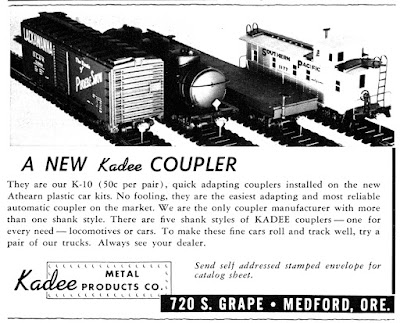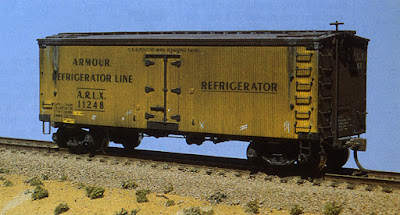This series of blog posts is about using many of the parts of an Athearn “Blue Box” tank car, with the insulated tank body, as the starting point to represent a particular prototype tank car, a Shell Chemical Company high-pressure car I showed in the previous post in the series (see it at: https://modelingthesp.blogspot.com/2024/07/an-athearn-blue-box-tank-car-part-2.html ).
At the end of the previous post (just cited), I had prepared the Athearn bottom sheet part for addition of the turnbuckle hold-down of the tank bands on the car. Below is a repeat of the close-up prototype photo from the previous post (link shown above). You can see that part shielding the emergence of the tank band from under the jacket is right at the longitudinal joint in the jacket.
My intention was to make the cover shield parts, then add turnbuckles. For the cover shields, I began with an Evergreen styrene scale 8 x 8-inch strip, and drilled a #75 hole through it near the end. I then carefully cut off the approximate cube containing the hole, from the end of the strip, and in turn carefully cut the cube at a 45-degree angle. A couple of these parts are shown below. Any parts that don’t come out properly are readily replaced with better ones.
Next these parts were glued to the bottom sheet, right at its top edge (see prototype photo for location), and aligned with the bolster position, as molded into the bottom sheet.
These are now ready for turnbuckles. The Tichy parts, no. 8021, are cored for 0.0126 wire, meaning that 0.012-inch wire will fit nicely. These need only be short lengths. I cut the wire pieces over-length, glued them into one end of the turnbuckle with canopy glue, then cut the wires to the correct length and glued the wire into the shield pieces,again with canopy glue. I did this with the bottom sheet inverted, as you see below, so that the wire ends were inserted vertically.
The bottom sheet modeling work is now completed, and as soon as work on the upper tank is finished, the two parts can be painted together. I’ll describe all that in a future post.
Tony Thompson









































